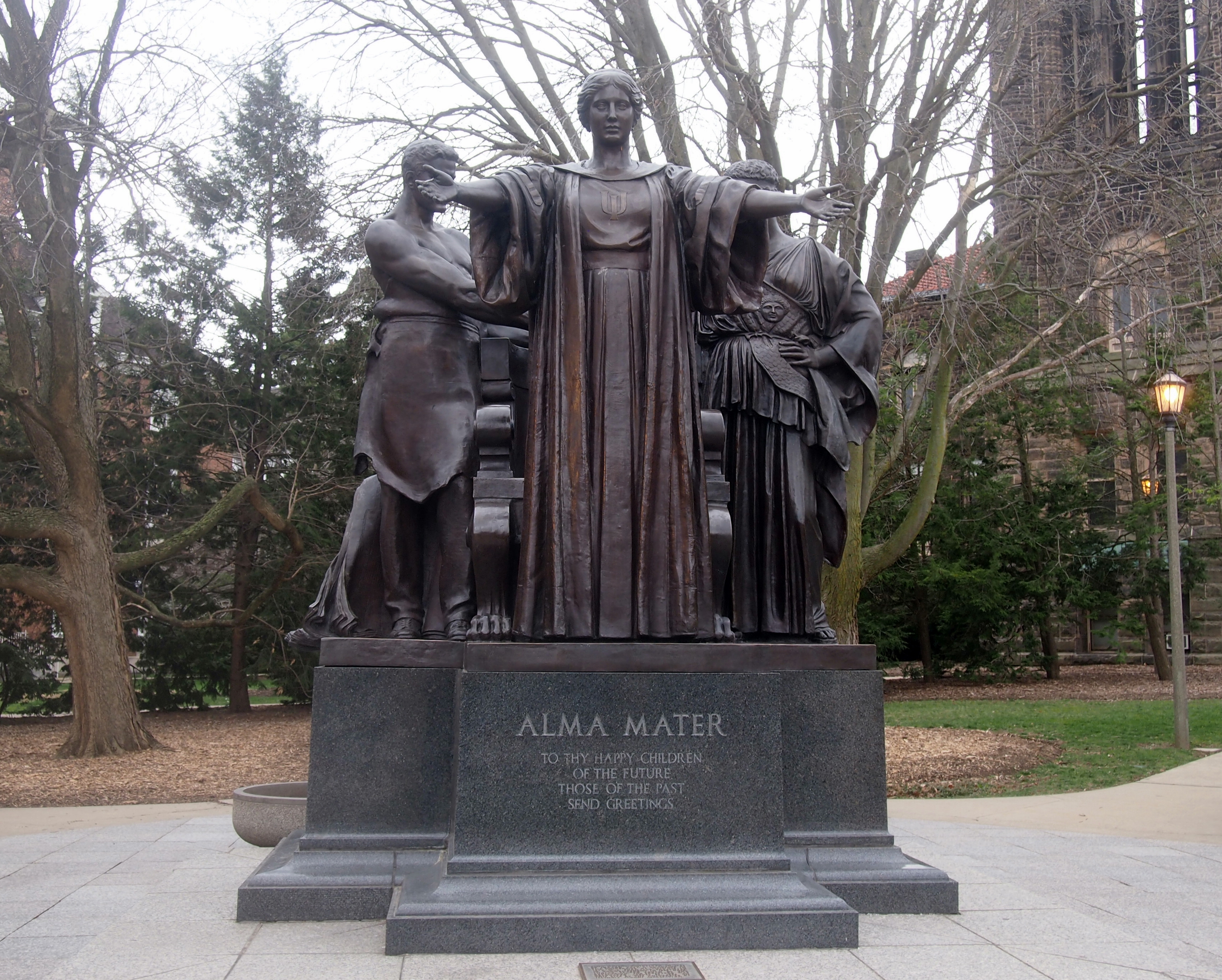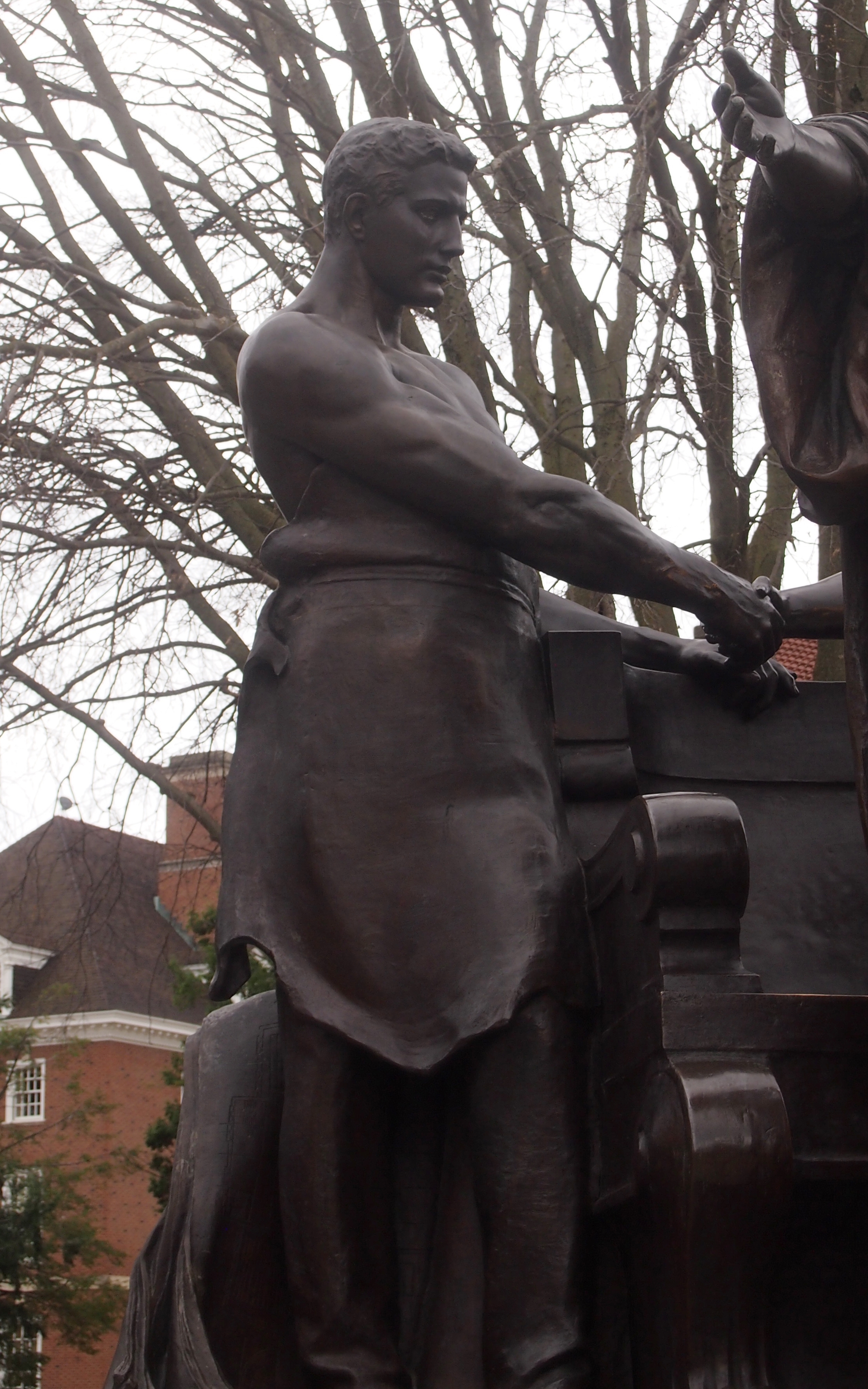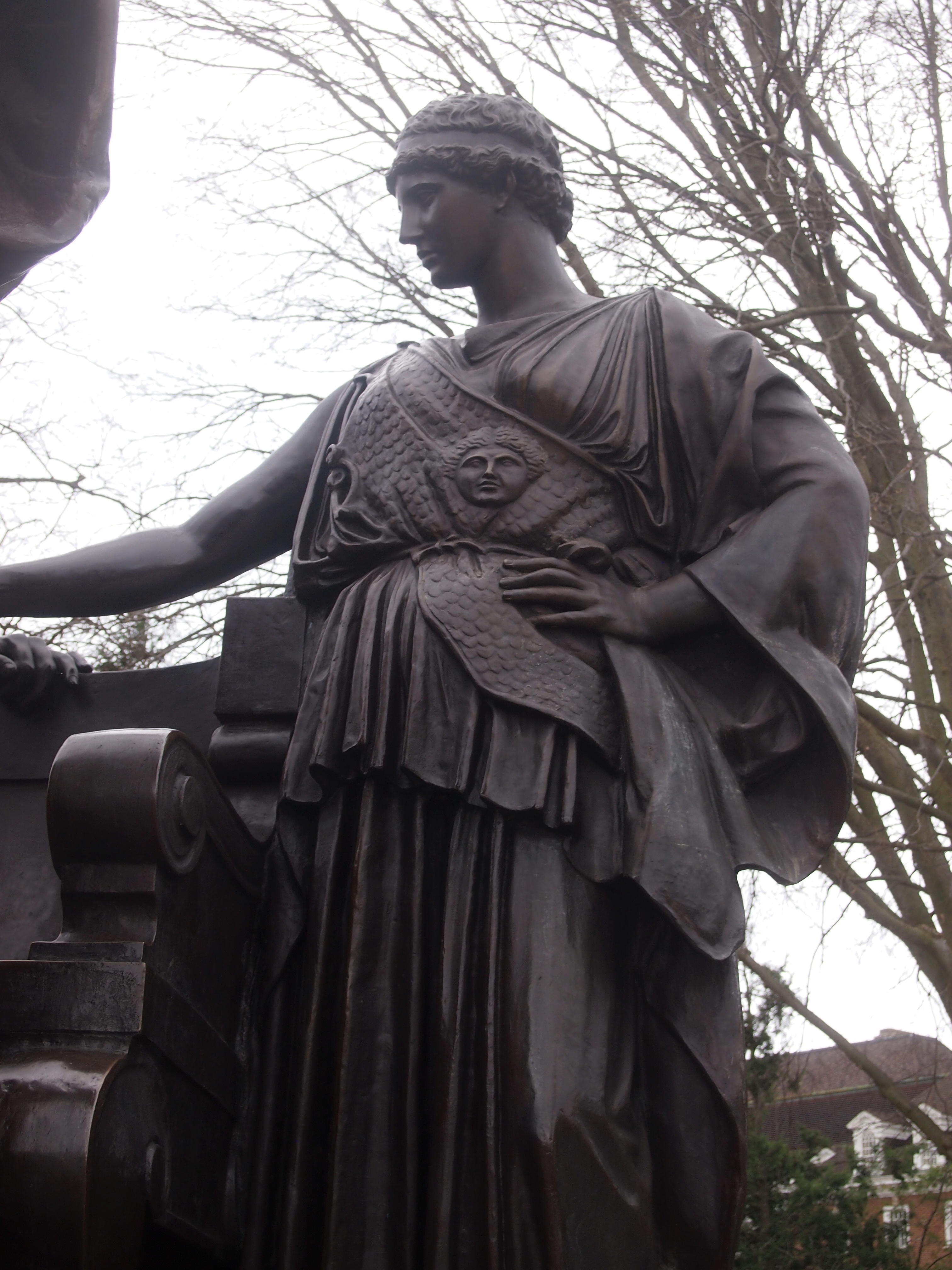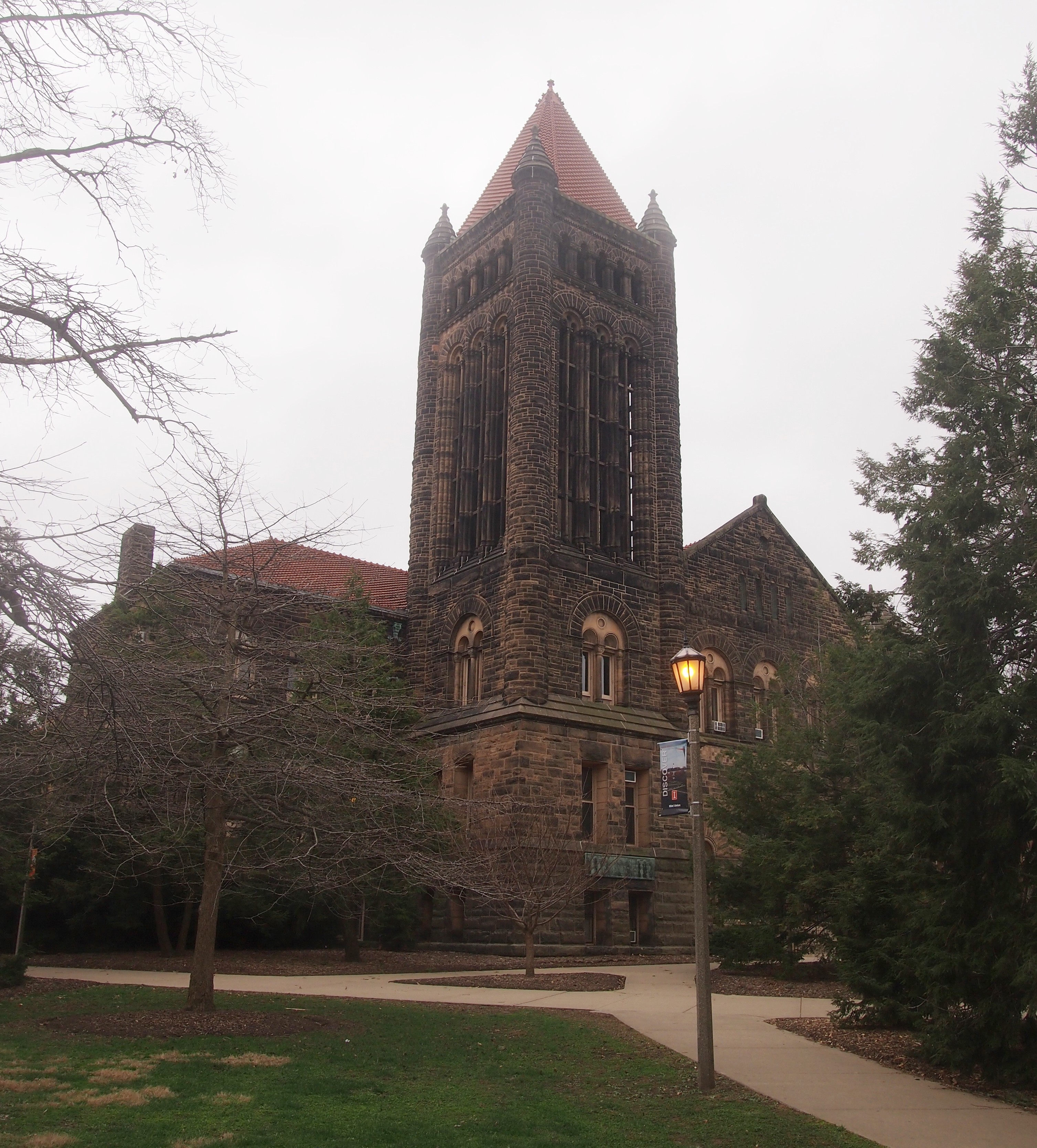I took Lilly back to school on Sunday. I didn’t do quite as much of a walkabout on the University of Illinois at Urbana-Champaign campus as I did in January, but I was determined to pause on the way out to see one thing: Alma Mater, a sculpture by Chicago’s own Lorado Taft.
 According to UIHistories Project by Kalev Leetaru, “Unveiled on Alumni Day, June 11, 1929, the statue depicts ‘a benign and majestic woman in scholastic robes, who rises from her throne and advances a step with outstretched arms, a gesture of generously greeting her children.’ Behind her stand the twin figures of Labor and Learning, joining hands in a bronze incarnation of the University’s motto.”
According to UIHistories Project by Kalev Leetaru, “Unveiled on Alumni Day, June 11, 1929, the statue depicts ‘a benign and majestic woman in scholastic robes, who rises from her throne and advances a step with outstretched arms, a gesture of generously greeting her children.’ Behind her stand the twin figures of Labor and Learning, joining hands in a bronze incarnation of the University’s motto.”
This is Labor. The muscular man in the work duds.
 Learning, in Classical garb. It would be more interesting if the costuming were reversed, since labor involves learning and learning involves labor, but never mind.
Learning, in Classical garb. It would be more interesting if the costuming were reversed, since labor involves learning and learning involves labor, but never mind.

Older pictures of the statue depict a green patina, acquired over time. During the 2010s restoration of the sculpture, that was stripped away, so presumably it now looks a lot like it did when new.
“Conceived in 1922, Alma Mater was cast in 1929 by the American Art Bronze Foundry and paid for by donations by the Alumni Fund and the classes of 1923-1929,” notes Leetaru. “It was crafted by Taft as ‘his gift to the University in commemoration of the fiftieth anniversary of his graduation.’ Alma Mater rests on a granite pedestal conceived by Charles Platt.
“The statue was originally placed directly behind the Auditorium, and at night spotlights cast twin shadows of Labor and Learning onto the rear wall of the Auditorium, making them truly larger than life. On August 22, 1962, the Alumni Association moved the sculpture to its present location in front of Altgeld.”
Altgeld being Altgeld Hall, named after the Illinois governor. There’s a bell in that tower, and I took this picture as it was ringing 4 o’clock on Sunday.
 “Completed in 1897, Altgeld Hall, originally known as the Library Building, was designed by Nathan Ricker and James McLaren White…” writes Leetaru. “From 1955 to the present, the Department of Mathematics and the Mathematics Library have called the building home.
“Completed in 1897, Altgeld Hall, originally known as the Library Building, was designed by Nathan Ricker and James McLaren White…” writes Leetaru. “From 1955 to the present, the Department of Mathematics and the Mathematics Library have called the building home.
“The building is an example of Richardsonian Romanesque architecture and the external stonework is pink limestone. The original pink hue may still be seen in the interior of the East entrance.”